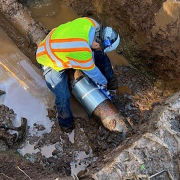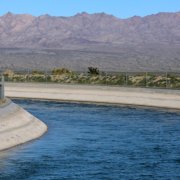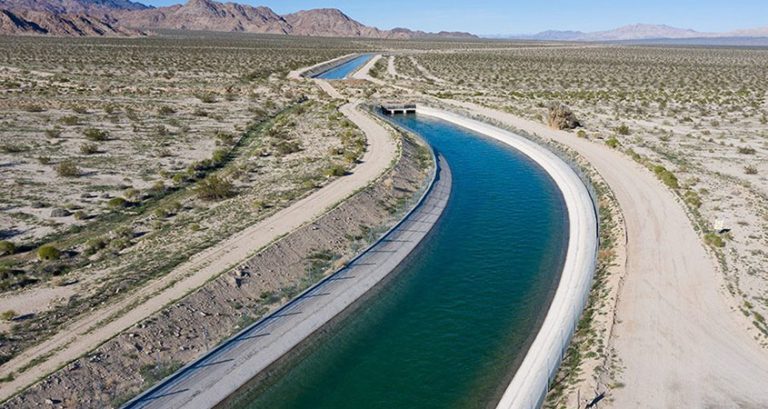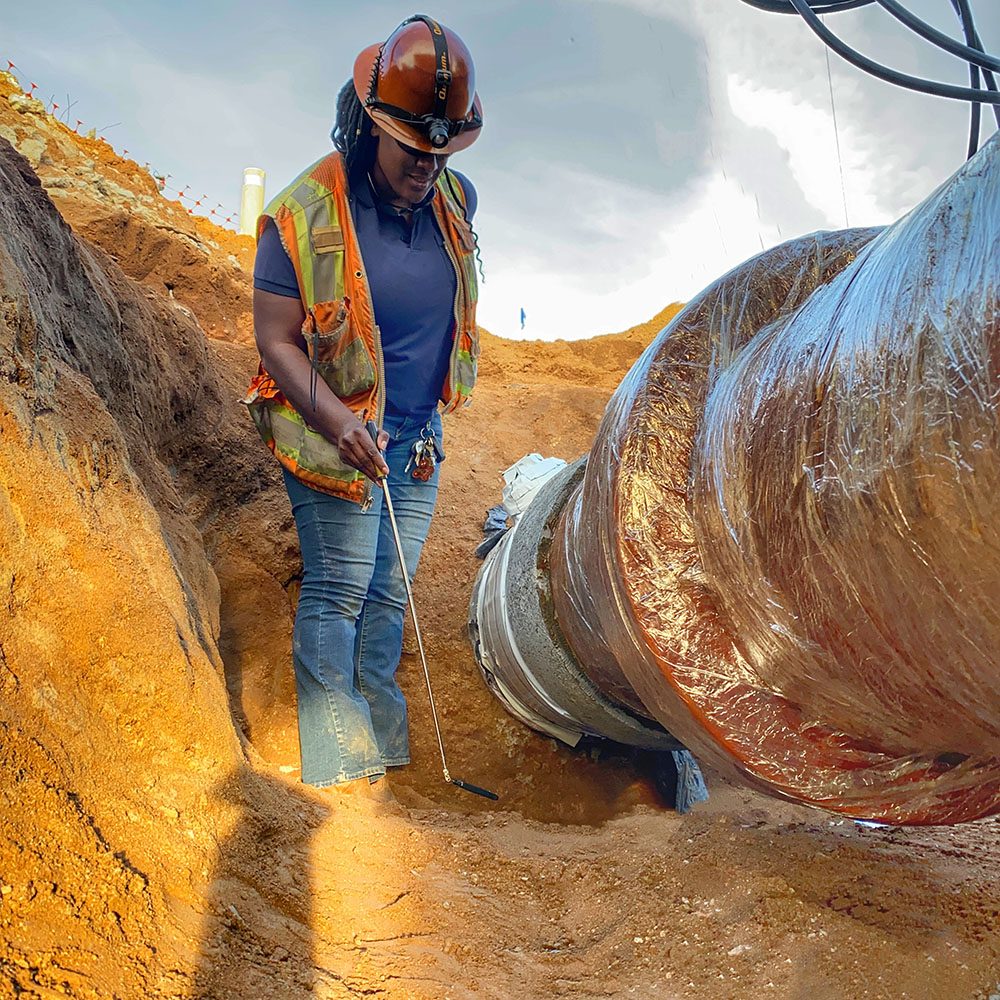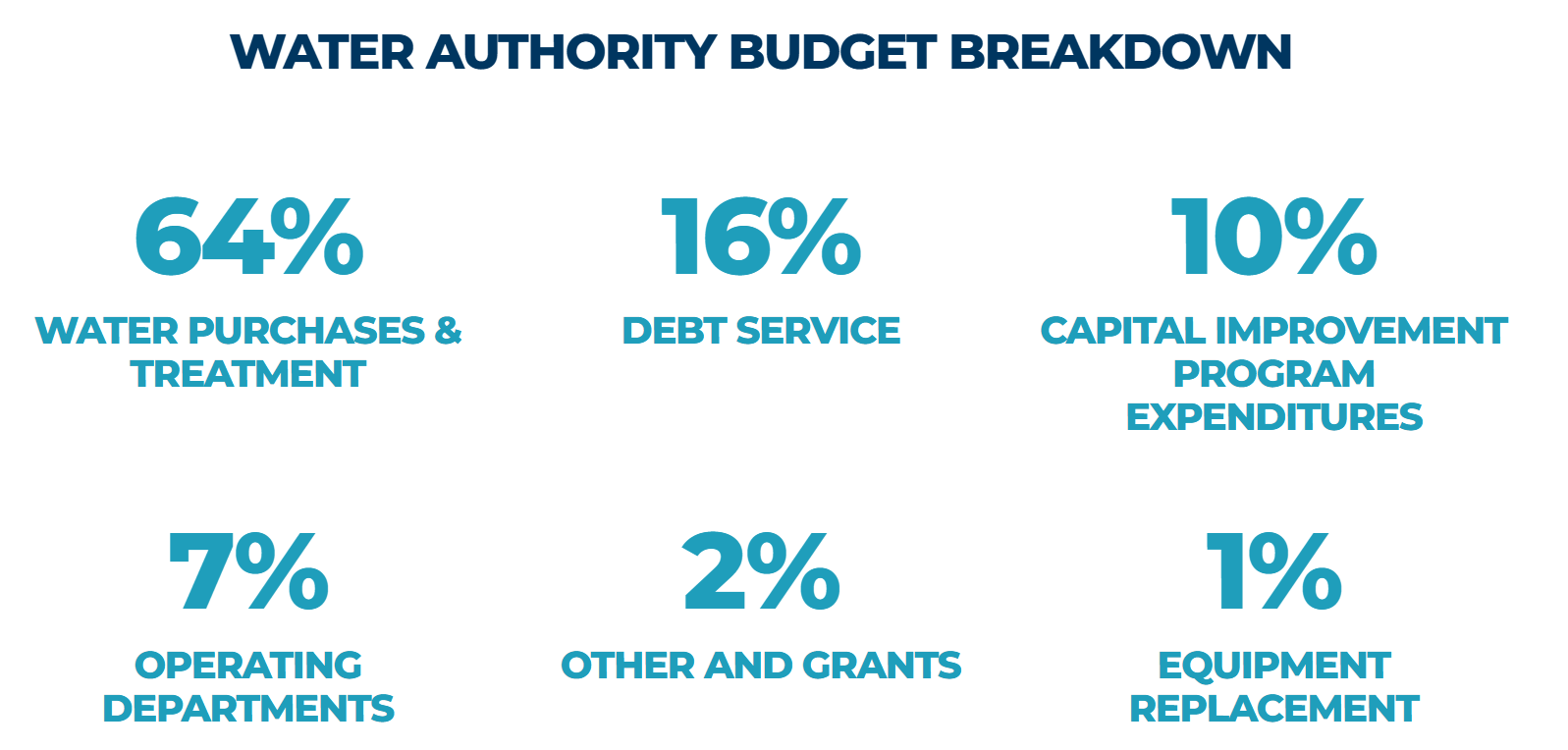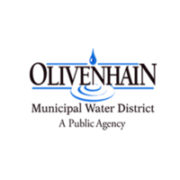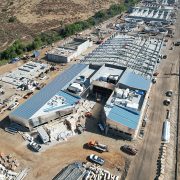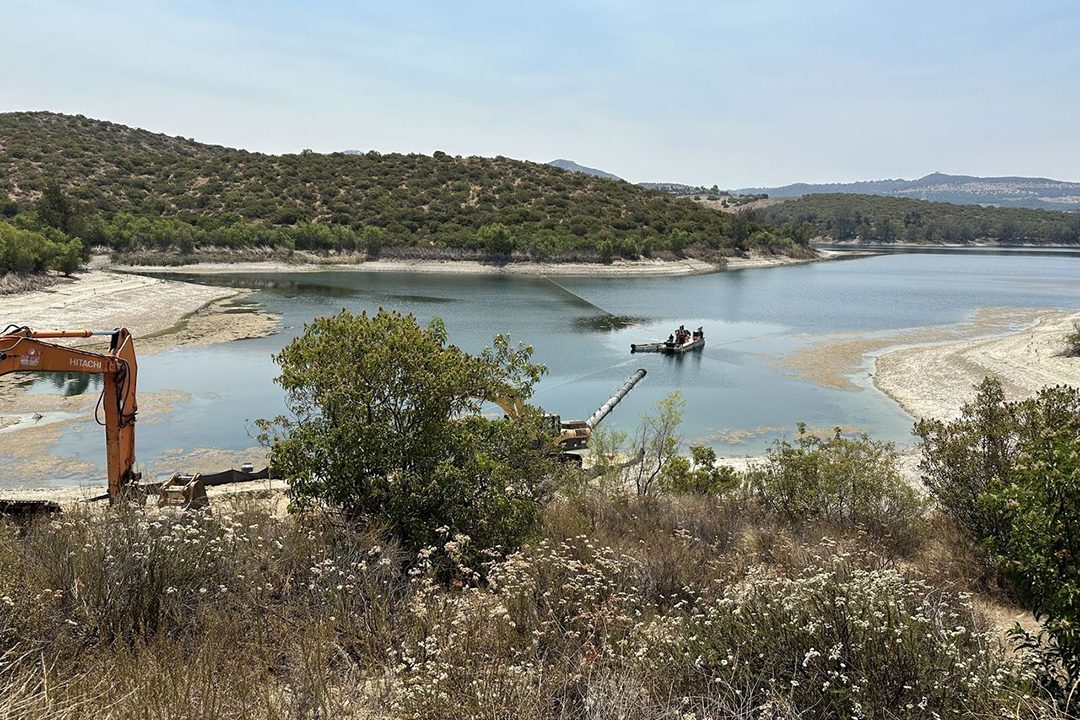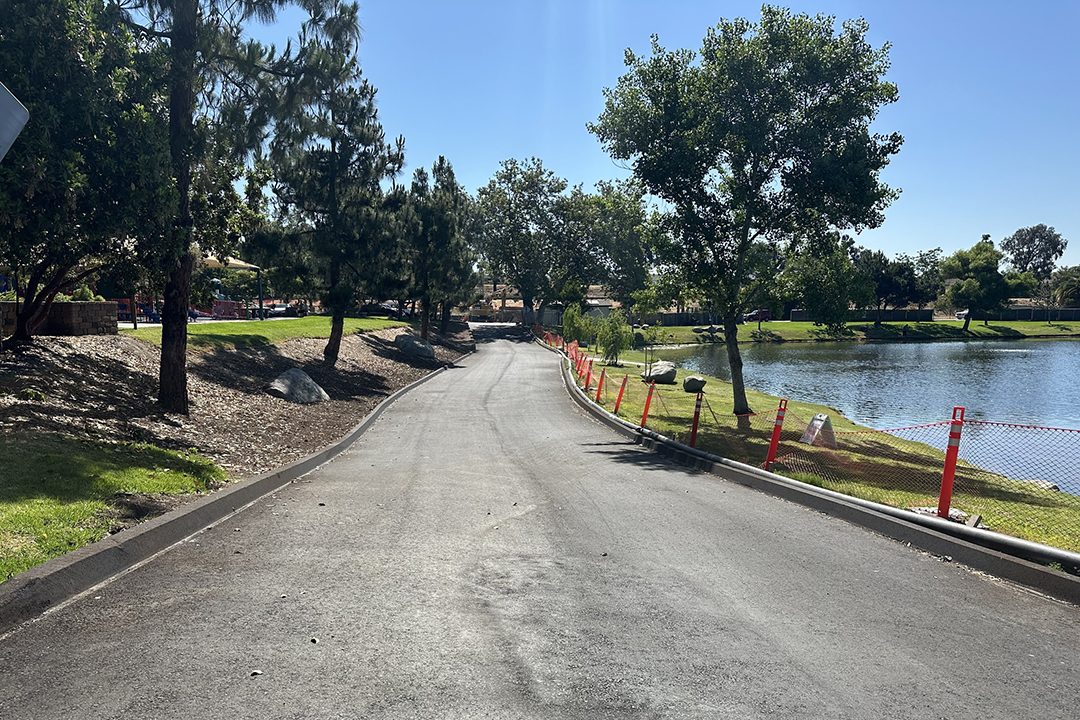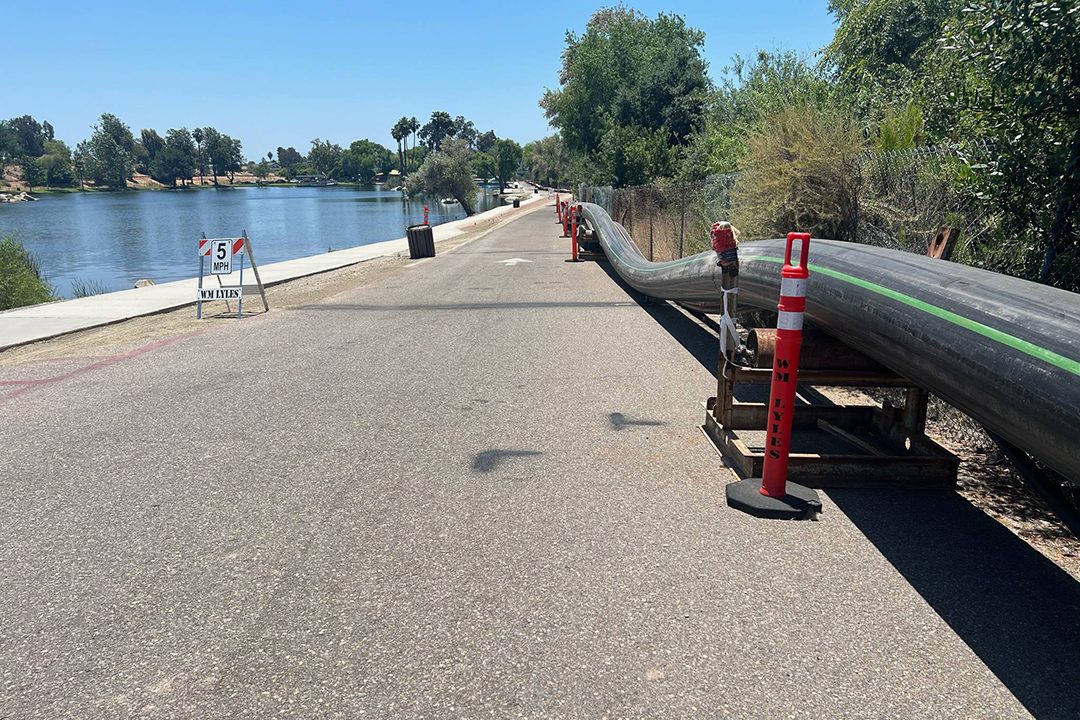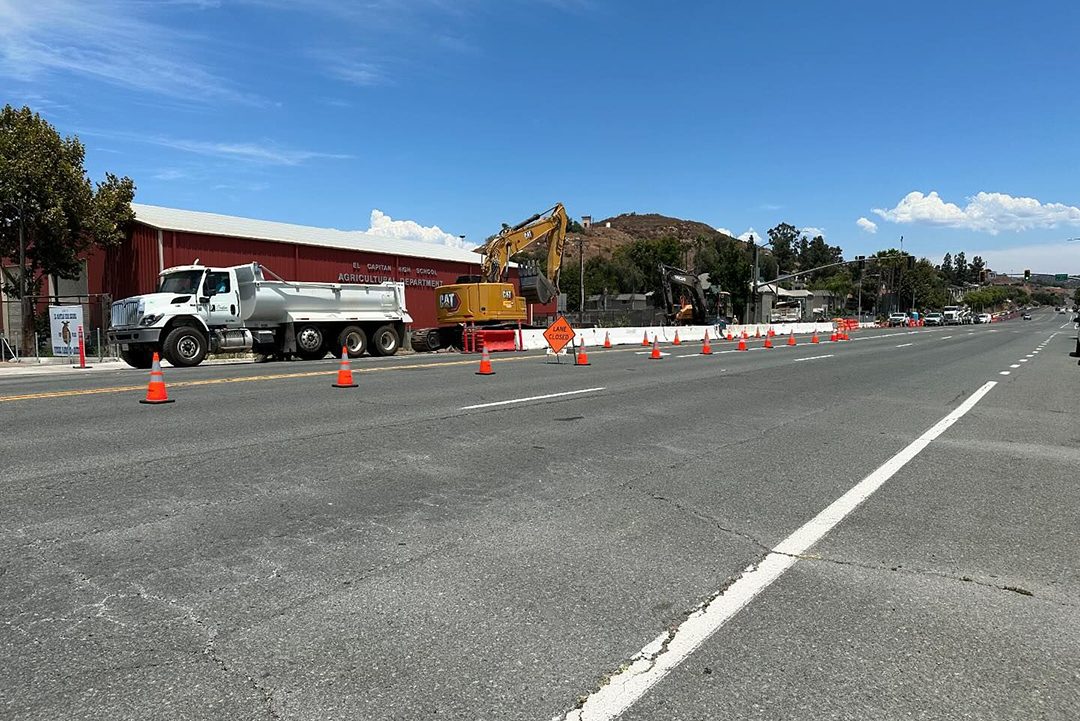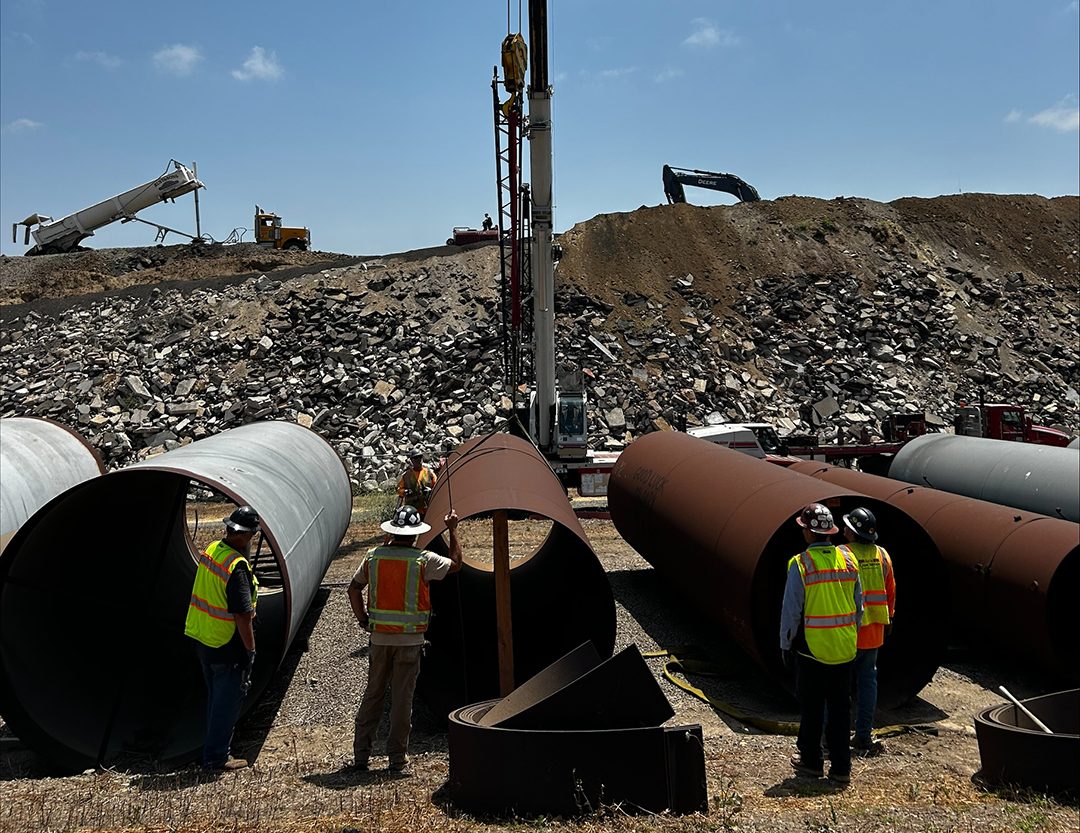Waterline Replacement Project Enhances Water Supply Reliability
The Vallecitos Water District is nearing completion of a major waterline replacement project, improving water system reliability for generations to come.
The Tres Amigos project serves customers in the northern part of the Vallecitos Water District, northeast of Gopher Canyon Road, along Ormsby Drive and Fairview Drive, with a small extension onto Carrio Drive. The six and eight-inch thin-wall steel pipelines were originally installed in the 1950s and 1960s.
Due to aging and system impact over time, the pipeline had become prone to water main breaks as often as once a month, with considerable disruption for customers.
Long Lasting Relief for Vallecitos WD Customers
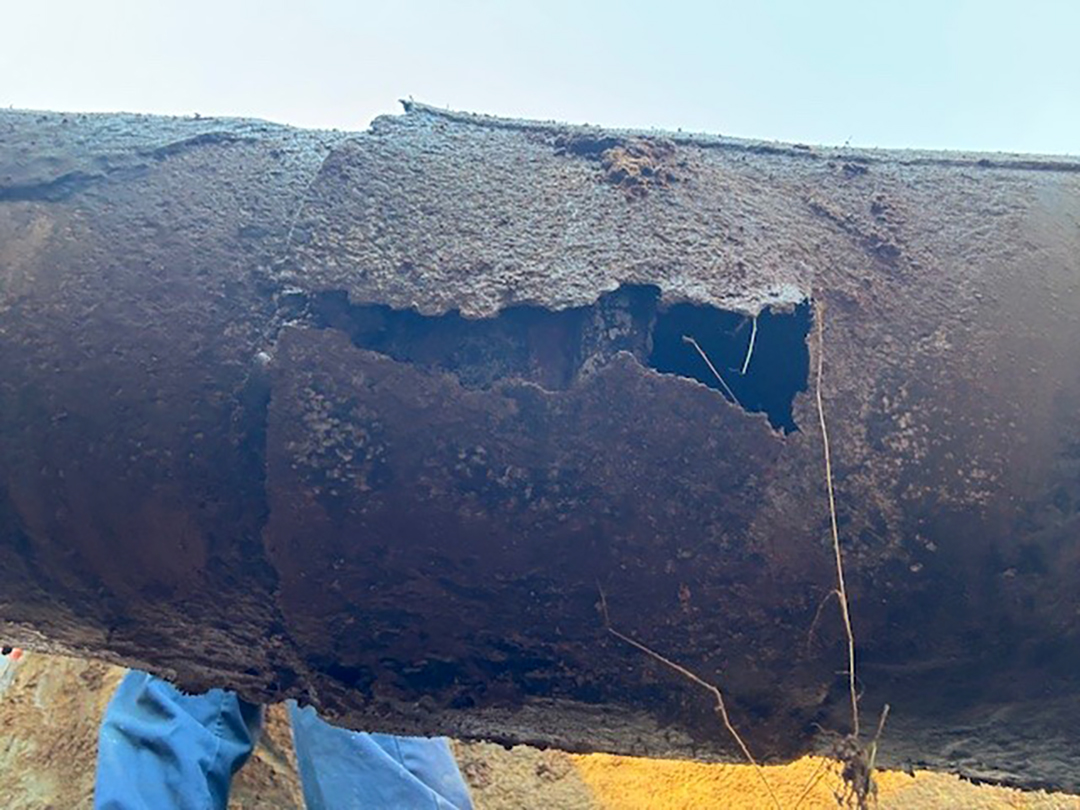
Aging thin-wall steel pipelines were responsible for as many as one break per month. Photo: Vallecitos Water District
The Vallecitos Board of Directors approved the replacement of 9,500 feet of pipeline most at risk. In addition, a key objective was to relocate the existing pipeline out of private residential backyards and into the roadways. This included relocating existing residential water meters for improved maintenance accessibility and safety.
Marissa Padilla, Vallecitos WD Capital Facilities Engineer, explained, “By upgrading the existing thin-walled steel pipeline to meet VWD’s current standards, we hope to provide long-lasting relief to our customers who have experienced recurring water main breaks and service interruptions in recent years.
“These improvements will also help reduce the strain on District resources by minimizing the need for ongoing emergency repairs.”
See video of the waterline repair project underway.
The aging steel pipelines are being replaced with new PVC pipes. The estimated lifespan of the new pipelines is 70 years.
The year-long project required extensive communication by the Vallecitos Water District and its contractor with affected residents whose water service would be temporarily disrupted to allow replacement of the pipeline, and coordination with property owners, allowing access by construction crews to remove and move the existing pipelines.
Resident Diane McDaniel said the water leaks had become a significant issue in their rural neighborhood. McDaniel said she was happy to learn about the project, despite the challenge presented by temporary water service disruptions and construction access.
“Vallecitos was always very good about notifying us through the phone system that we would be out of water until in the evening … They always got everything done ahead of time,” said McDaniel.
“I think it went really, really well. It went smoothly with all the input and help from the contractor, the Vallecitos Water District staff that was on the job.”

Construction crews were able to leave customer Diane McDaniel’s backyard burial ground for her pets undisturbed. Photo: Vallecitos Water District
Crews were even able to work with McDaniel to avoid disturbing an area of her property dedicated to a small pet graveyard near the existing water line that would be removed. “Holly and Goliath and Little Bit and Tutu, they’re all buried over there. And I thought, ‘Oh, my God, they’re going to be digging up dog bones and cat bones. They were able to avoid all that. That’s great!”
Resident Stuart McClure said the short-term inconvenience is an investment in the region’s future. He praised the district’s prompt response and efficient handling of issues, even at odd hours.
“Those breaks affect your life in a daily way. It’s surprising how important water is for our survival,” observed McClure. “It’s a major thing to have proper infrastructure.
“They might infringe upon your life for a few minutes, here and there. You’re going to get some valuable infrastructure that will serve you later on in life, especially if there’s a big fire.”
Project Prevents Future Breaks and Repairs
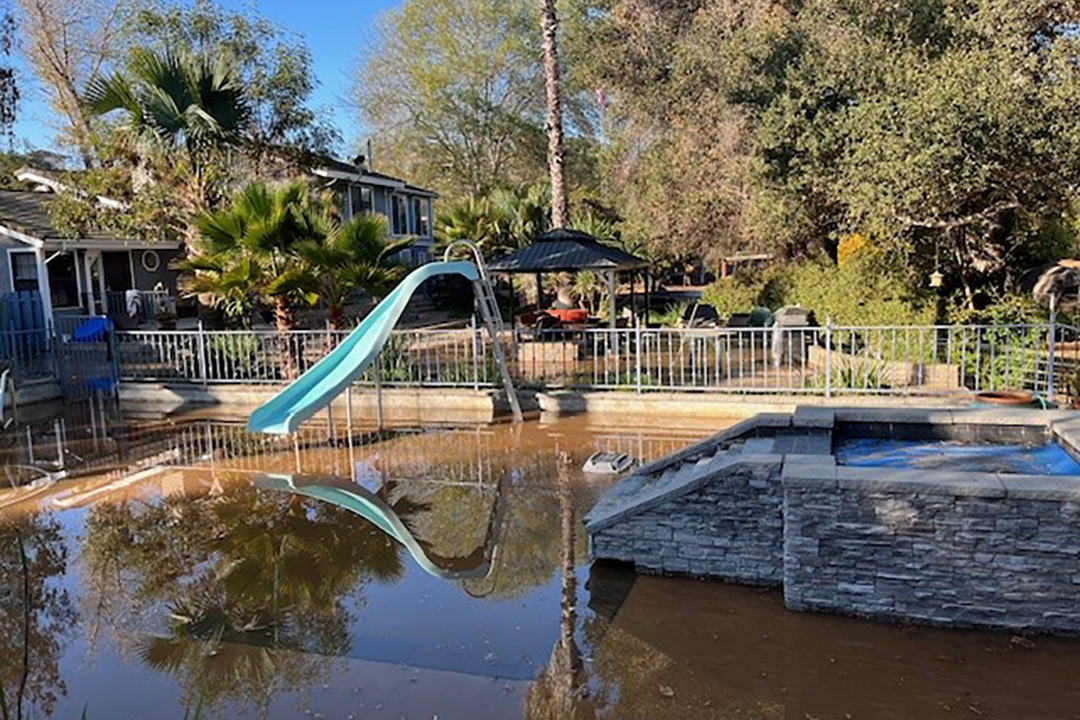
The replacement pipes made of PVC have a lifespan of 70 years and will prevent flooding like this long into the future. Photo: Vallecitos Water District
The installation of thicker, more durable PVC C900 DR 14 pipe is a significant improvement that will help prevent future breaks and repairs. Relocating the pipeline to more accessible areas will facilitate future maintenance and lessen the impact on local residents, securing a more reliable water system while also helping protect private properties.
Delivering safe, reliable water service while minimizing impacts to residents and the environment by investing in this infrastructure today will conserve a precious resource and ensure reliable service for generations to come.
Residents can learn more about the project on the Vallecitos Water District website.

